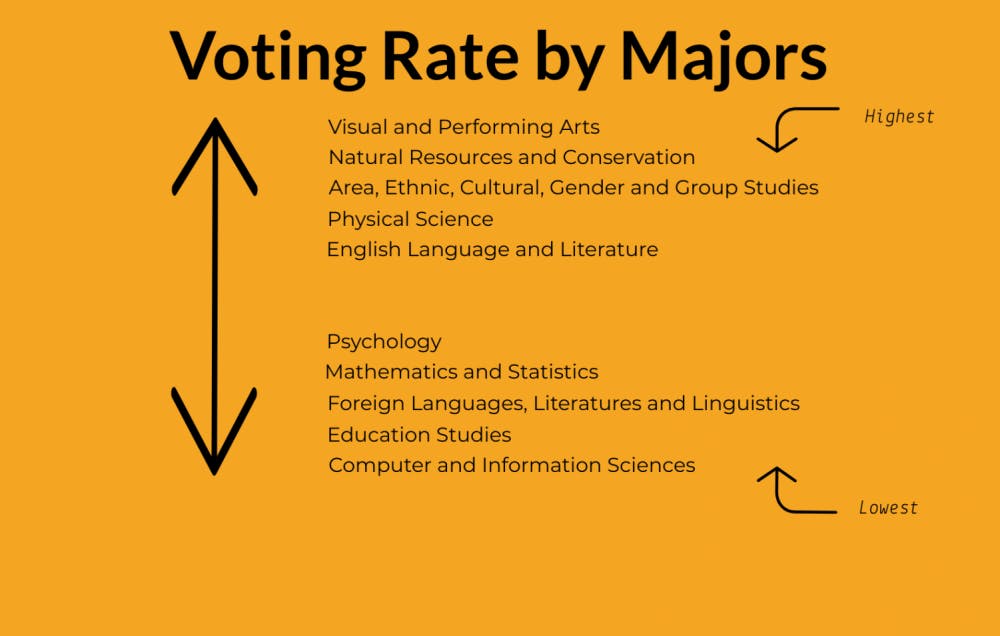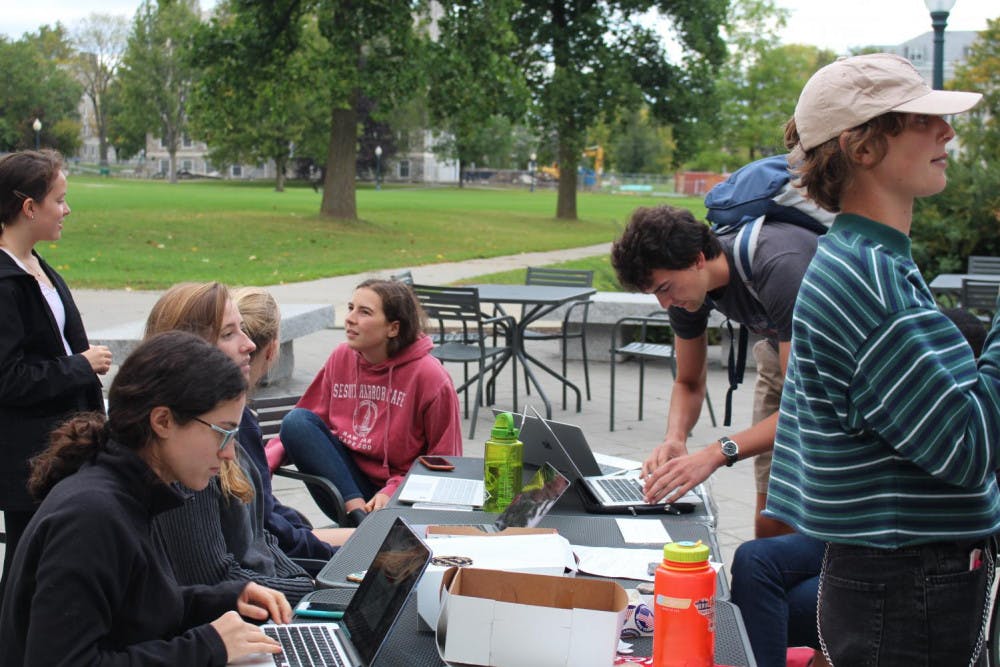Middlebury’s student voting rate increased from 15% in the 2014 midterm elections to 51% in 2018, according to a national voting report released last week by the Institute for Democracy & Higher Education (IDHE) at Tufts University.
“This increase is incredibly important because it demonstrates how Middlebury College students are engaged in both local and national politics, and have realized the importance of their generation going to the polls and casting their vote for causes they believe in,” said Nora Bayley ’21, co-president of the non-partisan student organization MiddVote. MiddVote, which was founded in 2006 encourages and helps students participate in local, state and national elections.
Middlebury is not alone in this upwad trend. College voting across the United States has more than doubled from 2014 to 2018, with national voting rates skyrocketing among eligible college students from 19% to 40% within the four years. These statistics were published in the IDHE’s Democracy Counts 2018, which analyzed voting patterns for more than 10 million college students on more than 1,000 campuses across all 50 states and the District of Columbia.
The IDHE report shows that Middlebury students turned out to the polls in greater numbers than most other colleges across the United States, Bayley noted. This difference can perhaps be attributed to MiddVote’s efforts to engage students; last fall, MiddVote held at least 10 voter registration drives and absentee-ballot request drives for the midterm elections.
“We also provided free stamps for students to use when sending their ballots back to their home state, and helped students who were experiencing difficulties requesting or receiving their ballot in the mail,” Bayley said.
MiddVote also received a grant from the organization #VoteTogether, which allowed it to provide transportation to and from the Middlebury Town Offices on election day for Vermont voters, and to host a “Party at the Polls” for both college students and locals.

“Helping remove barriers to voting can encourage participation and we hope to carry on this initiative during the 2020 presidential elections,” said Ashley Laux, program director at the Center for Community Engagement. “MiddVote’s in-person outreach method of hosting many on-campus voter registration and absentee ballot drives is a useful mechanism for Middlebury College students to get their questions answered by trained peers,” she said.
IDHE intended for this study to “support political learning and civic engagement, as well as to identify and address gaps in political and civic participation,” according to a press release. It did not receive information that could individually identify students or how they voted.
The IDHE findings looked at differences across genders, race and ethnicity, year, major and various other factors when it came to determining voting habits.
Nationwide, women in college continued to vote at higher rates than men in 2018. This trend was true for Middlebury as well. The report showed that black women maintained their position as the most active voters on campus, and Hispanic women made the largest gains.
The largest voting rate increase nationally across racial or ethnic groups was among Hispanic students, from 14% in 2014 to 36.5% in 2018.
“Voting gaps between disciplines persisted in 2018,” according to the IDHE press release. Turnout among students in STEM fields and in business lag behind students studying the humanities, social sciences and education.
At Middlebury, of the majors included in the study, Visual and Performing Arts ranked the highest in 2018 voting rate, with Natural Resources and Conservation trailing closely behind.
Historically, older Americans vote at higher rates than their younger counterparts. But the turnout gap between students under 22 and students over 30 decreased 2014 and 2018, the study found.
According to the U.S. Elections Project, the voting rate increased among all Americans by 13% in 2018 as compared to 2014. In comparison, the college and university National Student Voting Rate (NSVR) rose 21%.
Increased political involvement on college campuses will likely impact the 2020 presidential elections, according to an article published in the Washington Post. NBC News analysts credited voters under 30 as a key group in bringing about the Democratic takeover of the House of Representatives in 2018. Surveys indicate that young voters tend to oppose President Trump, especially on issues such as climate change, immigration, gun violence and student debt.
MiddVote will continue its efforts this semester. Most recently, the organization hosted a voter registration outside McCullough on Tuesday, Sept. 23 for National Voter Registration Day.
Student voting participation triples from 2014 to 2018 midterm elections

NORA PEACHIN
MiddVote members (from left to right) Kayla Lichtman ’21, Neta Kafka ’22.5, Paige Dickson ’21, Sophie Levine ’23, and Abby Denis ’21 run voting drive outside of McCullough Student Center for National Voter Registration Day.
MiddVote members (from left to right) Kayla Lichtman ’21, Neta Kafka ’22.5, Paige Dickson ’21, Sophie Levine ’23, and Abby Denis ’21 run voting drive outside of McCullough Student Center for National Voter Registration Day.
RILEY BOARD/THE MIDDLEBURY CAMPUS
Comments



